Exploring Taiwan’s Marine Culture—Directions of Marine Education for Elementary and Secondary School Students
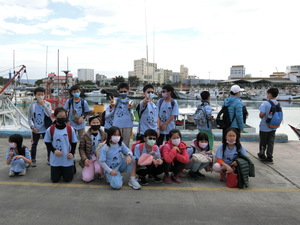
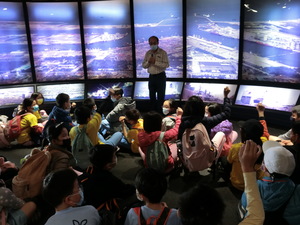
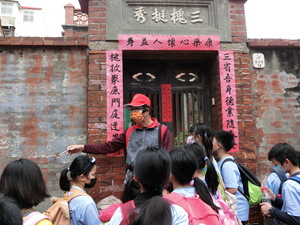
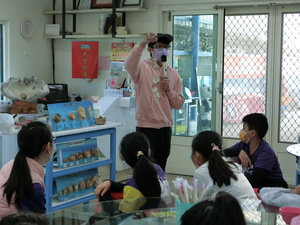
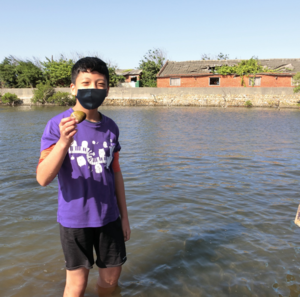
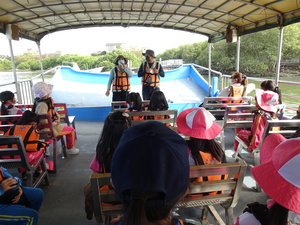
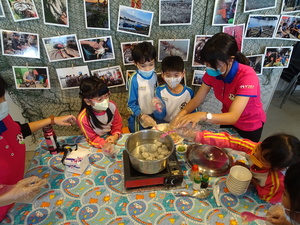
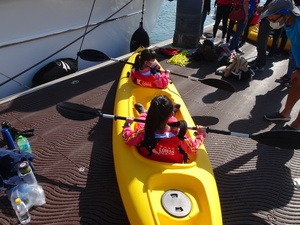
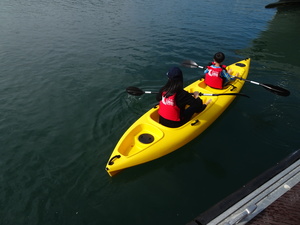
Project Assistant:WU,PEI-SHAN
To popularize marine education and cultivate talents with ocean literacy, the K–12 Education Administration of the Ministry of Education commissioned the Taiwan Marine Education Center to plan the directions of the marine education in the northern, central, and southern regions of Taiwan and provide marine education–related activities for students of elementary and secondary schools.
The Taiwan Marine Education Center invited Yehliu Elementary School (Wanli District, New Taipei City), Wenchang Elementary School (Beitun District, Taichung City), and Yizai Elementary School (Anping District, Tainan City) to serve as pilot schools. According to the learning topics of the marine education in each region, 1-day age-appropriate courses were arranged from November to December.
The educational direction in the northern region focused on marine geology and culture. In the morning, the students visited the National Museum of Marine Science and Technology. The museum guide introduced students to marine culture in Taiwan and used special exhibitions to explain how countries at different latitudes use their marine resources. For lunch, students enjoyed a sumptuous seafood meal at their school, where the principal provided an introduction to the “slow fish diet.” In the afternoon, students visited the Yehliu Geopark and Yehliu Fishing Village to learn about the formation and appearance of various terrains created by marine erosion. In addition, students were introduced to different navigation methods through learning activities offered by the school. Students also learned more about their hometown through the fishing village visit and gained an understanding of changes in fishing resources and fishing methods related to Wanli crabs.
The educational direction in the central region focused on marine culture and society. Students visited the Fishery Exhibition Hall of Wuqi District Farmer’s Association, Wuqi Fishing Port, Lukang Old Street, and Yunlin Geloina erosa Exhibition Pavilion. At the Fishery Exhibition Hall, students explored various Taiwanese fish and aquaculture exhibits. Through detailed explanation by Director Huang of the Wuqi District Farmers’ Association, students gained an in-depth understanding of the evolution of Taichung Port and Taiwan’s marine culture. Moreover, with a visit to nearby Wuqi Fishing Port, students learned about local fishery culture. At the invitation of the Inspection Office, students also visited the Rockfish Marine Station in Wuqi Fishing Port set up by the Ocean Affairs Council to learn about the daily work of coast guards and related assistance projects; this experience increased students’ understanding of coast guards and how they rescue people. Subsequently, students visited Lukang, which is famous for maritime trade, for a guided tour of trade history. They also participated in a do-it-yourself course on lion necklaces, which are closely related to temple culture. These experiences enabled students to understand the importance of maritime trade to local development and its cultural and historical influence. Finally, students visited the Yunlin Geloina erosa Exhibition Pavilion. The vivid explanation and guidance of the guide enabled students to learn about the differences of bivalvia and the most effective means to select them. After the explanation, students attended a do-it-yourself course involving sea shells; students turned marine debris into small artworks. Finally, activities such as canoeing and clam handling were organized to provide students with opportunities to experience the ocean.
For the educational direction in the southern region, students visited the LOHAS Ocean Maritime Academy in Anping District, Tainan to experience canoeing. Several professional coaches and schoolteachers led the students on their first canoeing activity, and everyone had a great time. At noon, the students went to the Milkfish Exhibition Pavilion at Yuguang Island. The exhibition guide introduced milkfish culture to the students. Students were given the opportunity to prepare their own fish balls, which were then incorporated in the fish ball soup that the students had for lunch. Through the activities at this exhibition, students learned about fish-eating culture in Tainan. Finally, they visited Erren River in Kaohsiung that was once heavily polluted. Students took a motorized bamboo raft to observe various birds that returned to the habitat and mudskippers and fiddler crabs in the Baishalun Wetland at a close range; this experience along with the information provided by the guide helped instill in students a sense of caring for the ocean.
Through these trails on the marine education directions, teachers and students acquired rich and unforgettable marine knowledge. The content of relevant course teaching plans and study lists can be downloaded from the website of the Taiwan Marine Education Center: https://tmec.ntou.edu.tw/p/412-1016-10069.php?Lang=zh-tw

